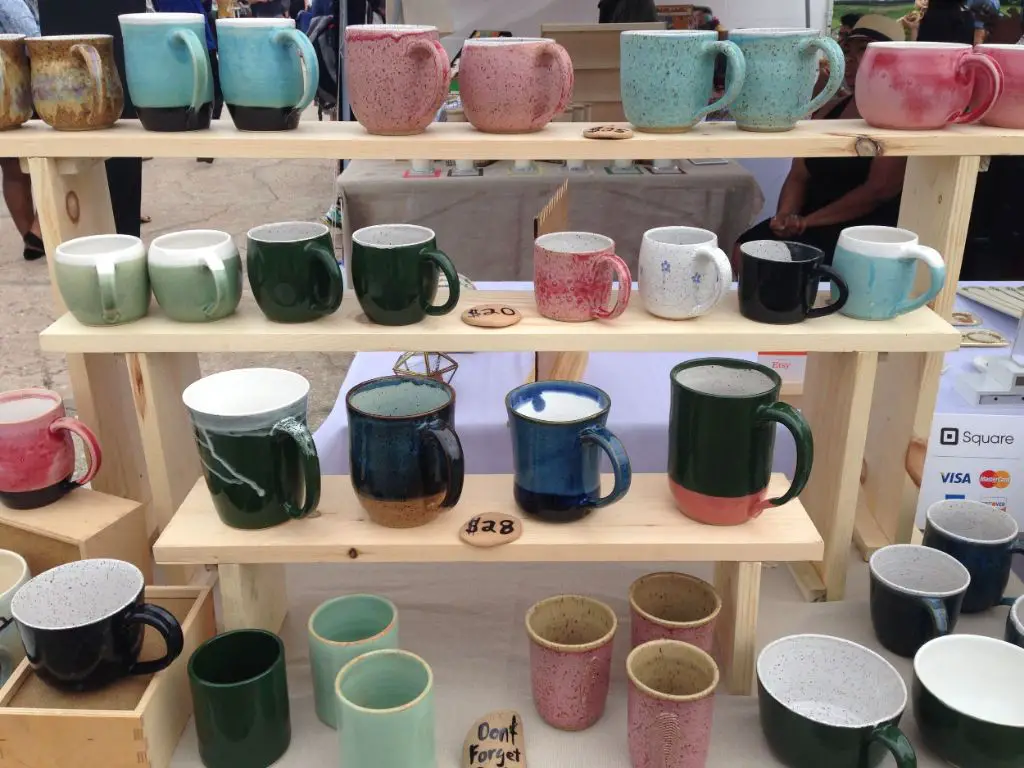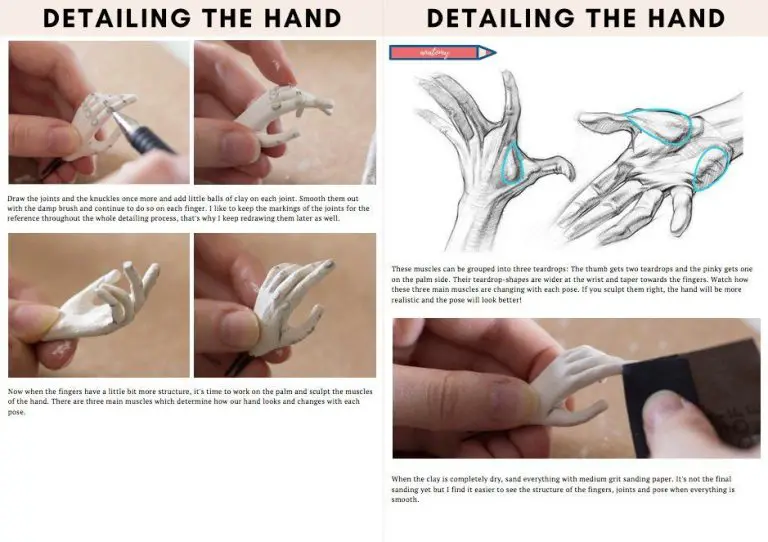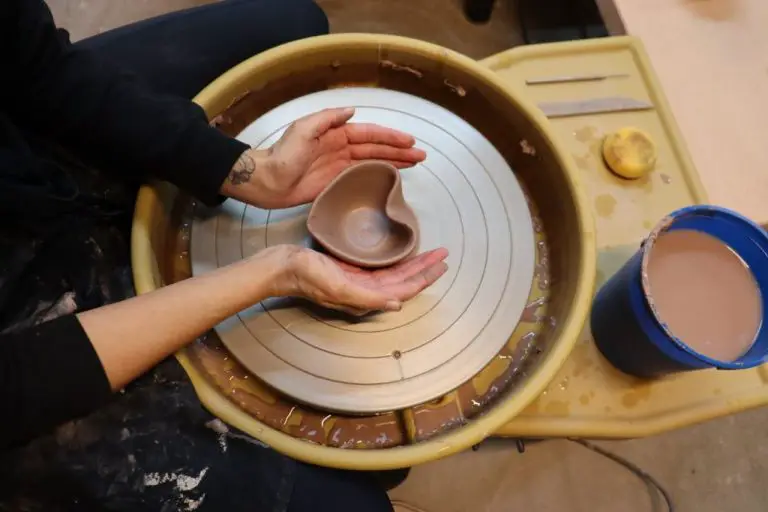Is Handmade Pottery Profitable?
The handmade pottery industry has seen a resurgence in recent years as more people seek unique, handcrafted items over mass-produced products. With platforms like Etsy, handmade potters have an easier time than ever selling directly to customers online. Starting a pottery business requires an investment of time and money upfront, but can be profitable if executed thoughtfully. Key factors for success include establishing efficient studio setup and workflows, mastering pottery techniques, developing a business and marketing strategy, managing costs, and pricing work appropriately. With passion and perseverance, many artisans are able to turn their pottery passion into a full-time career. While challenging, starting a handmade pottery business can be immensely rewarding for the right individual.
Costs of Starting a Pottery Business
Starting a pottery business requires some upfront investments. The main costs include setting up a studio space, purchasing a kiln, acquiring materials and tools, and establishing an inventory. According to Wheel & Clay, the beginner or hobbyist can start molding clay at a cost between $200-$1,200 while a professional business may require $50,000 to $150,000 for a full studio setup.
Finding suitable studio space to work in and store inventory is often one of the largest startup costs. Renting a dedicated space provides room for equipment like pottery wheels, worktables, storage shelves, and a kiln. The location should have adequate ventilation and electricity to handle operating a kiln safely. PotteryCrafters estimates that leasing a minimum 800-1,200 sq ft studio space runs $800-$1,500 monthly.
Electric kilns capable of reaching the high temperatures needed for firing pottery start around $1,000-$2,000 for a small unit up to $5,000 or more for a large production kiln. Kilns require a dedicated 220V circuit. Additional kiln furniture like shelves and posts add further expense. Safety equipment such as kiln vents and fire extinguishers are also necessary.
An inventory of specialized pottery tools like sculpting blades, brushes, ribs, sponges, and wheel attachments is required, costing a few hundred dollars. Maintaining an ongoing supply of pottery materials like modeling clay, glazes, underglazes, and stains represents an ongoing production cost as inventory is sold.
Time Investment
Making pottery by hand is an extremely time-intensive process. According to experienced potters on forums like Ceramic Arts Daily, most potters work 8-10 hours a day in their studios. This includes time spent wedging clay, throwing pieces on the wheel, handbuilding, cleaning up, glazing, loading kilns, etc. Marketing and selling also requires several hours per week minimum.
Some key time investments for a pottery business include:
- 2-5 hours per day making pieces
- 1-3 hours per day on finishing work like glazing and kiln firing
- 2-4 hours per week photographing work
- 2-3 hours per week managing online shops and social media
- 1-2 hours per week packaging and shipping orders
- 4-8 hours monthly prepping for and working markets/craft shows
Most potters caution that it takes months or years to build up enough stock and consistent sales to make pottery a profitable full-time business. Starting out, 20-30 hours a week in the studio is realistic. As the business grows and becomes more efficient, full-time potters often spend 40+ hours a week working.
Pricing Handmade Pottery
Pricing handmade pottery involves carefully calculating costs to ensure a reasonable profit margin. Key factors that determine pricing include:
- Materials – Clay, glazes, decorating supplies all cost money and must be factored into pricing.
- Overhead – Studio rent, utilities, equipment expenses need to be covered.
- Time Investment – Handmade pottery is very labor intensive. Artisans should calculate hourly rates to account for time spent.
According to potter Kassidy Renee Paige, “Costs are dependent on many factors – materials, overhead studio costs, admin and most importantly time, all go into pricing handmade pottery.” http://www.kassidyreneepaige.com/about-madebykassy
To determine pricing, potters calculate direct expenses per piece. Then they decide on an hourly rate for their time and estimate hours spent per item. These costs are totaled and multiplied by a profit margin percentage (e.g. 100%-300%) to reach the retail price. Profit margins must be sufficient to sustain the business.
Marketing and Sales
There are several different ways to market and sell handmade pottery, with the most common being online markets, craft shows and fairs, and galleries. Popular online options for selling pottery include Etsy, eBay, and personal websites with integrated ecommerce capabilities. Effective marketing strategies on these platforms involve great product photos, compelling descriptions, search optimization, and social media promotion. According to research, utilizing platforms like Instagram and Pinterest to market handmade pottery mugs can be highly effective in boosting sales in today’s digital age.
Participating in local craft shows and fairs provides an opportunity to sell products in-person and build connections within a geographic community. Having an attractive, eye-catching booth display and being able to engage with customers are keys to success. According to https://pagegenie.ai/blog/handmade-pottery-mug-manufacturing/, these types of events can be a profitable sales channel for artisan potters.

Additionally, partnering with local galleries, gift shops, and boutiques provides exposure to new audiences and a retail presence without major overhead costs. Overall, utilizing a diverse mix of online and offline strategies allows pottery businesses to maximize visibility and establish a sustainable sales operation.
Building a Customer Base
When starting a pottery business, one of the most important steps is building an initial customer base. According to expertclay.com, it’s helpful to start by creating customer profiles based on the type of products you plan to make and ideal target demographics. Consider age, location, gender, income level and other factors when defining your target customer.
Networking and getting referrals can also help grow a pottery business’s customer base. Attending art shows, festivals and craft fairs provides exposure and opportunities to connect with potential customers in-person. Having existing customers refer their friends and family to purchase your pottery can be a powerful source of new business through word-of-mouth. According to craftybase.com, establishing an online presence through a website, social media and email marketing helps potters build their brand and reach new audiences outside of their local area.
No matter how you initially acquire customers, providing excellent service and high-quality pottery encourages repeat business and referrals over time. Focusing on your target audience and utilizing multiple marketing channels gives pottery businesses the best chance to gain a loyal following.
Managing Overhead Costs
Overhead costs include expenses like studio rent, supplies, and utilities that are necessary to operate a pottery business but are not directly tied to producing individual pieces. For a studio-based pottery business, rent is typically one of the largest overhead expenses. Studio space suitable for pottery production with adequate ventilation, access to water, and power can range from $400-$1000+ per month depending on location and size (https://cpdonline.co.uk/business-guides/setting-up-pottery-business/). Supplies like clay, glazes, tools, kiln shelves, and packing materials are also a significant ongoing cost. These supplies may cost $2000 or more per month for an actively producing studio.
Utility costs will also need to be factored in, especially if operating kilns which use a lot of electricity when firing. Gas and electric bills for operating a studio can run $300 or more per month. Overall, managing overhead costs is crucial for maintaining profitability. Strategies like finding more affordable studio space, buying supplies in bulk, and scheduling kiln firings efficiently can help minimize overhead expenses.
Profit Potential
The profit potential for handmade pottery businesses varies greatly. Some potters are able to earn a substantial income while others may struggle to turn a profit. According to Craftcover.com, a successful pottery business owner can potentially earn $20,000 to $100,000 or more per year. However, building a profitable business takes time and effort. Potters need to find ways to keep their costs low, develop a customer base, and market and sell their wares effectively.
There are certainly success stories of potters earning a good living from their craft. For example, one potter reported on Reddit that they were able to start their business part-time and eventually transition to full-time, earning around $60,000 per year from pottery sales and teaching classes. However, they cautioned that it took several years to build up their business and reputation. Consistency, persistence, business savvy and developing a unique personal style seem to be key factors for earning higher profits over time.
Keys to Success
To achieve profitability with a handmade pottery business, creators need a combination of creative talent, business acumen, and genuine passion for their craft. Some keys to success include:
Having exceptional pottery skills and creativity to produce unique, high-quality pieces that stand out. Constant practice and experimentation with new techniques, glazes, and designs is important. Taking classes can help build skills.
Understanding sound business principles like calculating overhead costs, establishing efficient production workflows, setting competitive but profitable pricing, and marketing effectively. Building relationships with galleries, shops, and shows that sell handmade work is also key.
Staying deeply connected to the medium by maintaining a hands-on role and finding joy in the tactile creative process. Passion keeps potters engaged and helps differentiate their work.
By combining creative talent, business savvy, and a true love for pottery, artisans can build rewarding, potentially profitable handmade pottery businesses.
Conclusion
In summary, starting a handmade pottery business offers significant profit potential but requires substantial upfront investment and ongoing effort. The average pottery business owner earns around $36,000 per year according to industry statistics, but top earners can make six figures. Keys to success include mastering the craft, calculating pricing carefully, finding efficient techniques, marketing creatively, and building a loyal customer base. It takes time to hone your skills and develop an audience. Persistence, passion, and business savvy are musts. There will be challenges like managing overhead costs and scaling production, but the personal and financial rewards of turning your art into a business can make it worthwhile.
With careful planning, high-quality products, and consistent effort, a pottery business can provide full-time income. However, it requires significant time investment upfront to develop skills and establish your name before earnings meet living expenses. Most successful potters work long hours perfecting techniques, improving efficiency, photographing work, attending shows, and interacting with customers. The work is physically demanding. Patience is critical, as profitability often takes 1-2 years. Start costs average $10,000-$15,000. Ongoing costs like materials, rent, utilities, and marketing must be managed wisely.
Pricing appropriately for time spent is essential yet challenging. Compare pricing to other artisans with similar quality and appeal. Charge 2-4x material costs. Wholesale prices are lower, while retail and custom work fetch higher prices. High-end potters can charge over $100 per hour of work. Provide exceptional customer service and develop a branded style to help justify pricing. Seek opportunities like craft shows, galleries, shops, lessons, and social media. Staying nimble, efficient, and creative while continuously improving your craft is key to building a sustainable and profitable pottery business.




